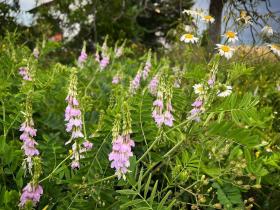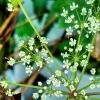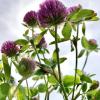Galega officinalis L. (Fabaceae) is a herbaceous plant distributed through Asia to temperate areas of Southern Europe. Recognized as a strong poison for sheep and horses (due to a guanidine-derived compound, the galegine, mainly present in the seeds (Bruneton, 2005)), it was also employed in traditional medicine and would notably be considered as a lactation stimulant. It also lowers blood sugar and also has been used as a diuretic in traditional medicine.
A Galega-based pharmaceutical preparation, Galactogil®, is recommended to treat insufficient lactation. Although the involvement of secondary metabolites and their efficiency has not yet been proved, recent studies (Le Bail et al., 2000) underline the presence of phytoestrogens in non-polar extracts of G. officinalis a natural source and anti-proliferative and “estrogen-like” activities.
The phytochemical investigation study of an acetone extract from the plant revealed three pentacyclic triterpenoids and a well-known phytosterol - β-sitosterol. Fukunaga et al. (Fukunaga et al., 1987) have already isolated several heterosides in G. officinalis and the study confirmed the presence of three triterpene aglycones.
Thanks to phytoestrogens content Goat's Rue extract interacts with estrogen receptors preventing premature skin aging while boosting collagen production and improving dermal elasticity. Rich in valued beta-sitosterol, Galega officinalis extract leaves immunomodulatory, antiseptic, anti-inflammatory, regenerating, and antioxidant effects on the skin.



